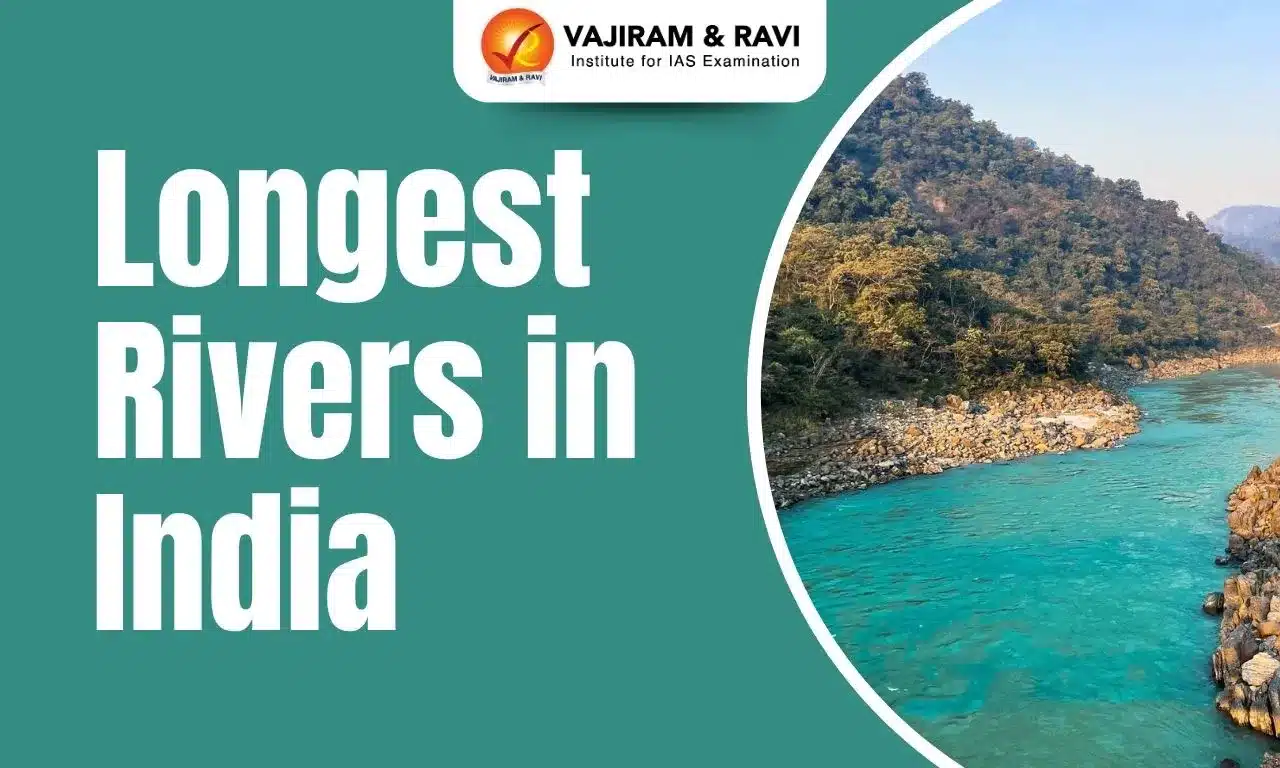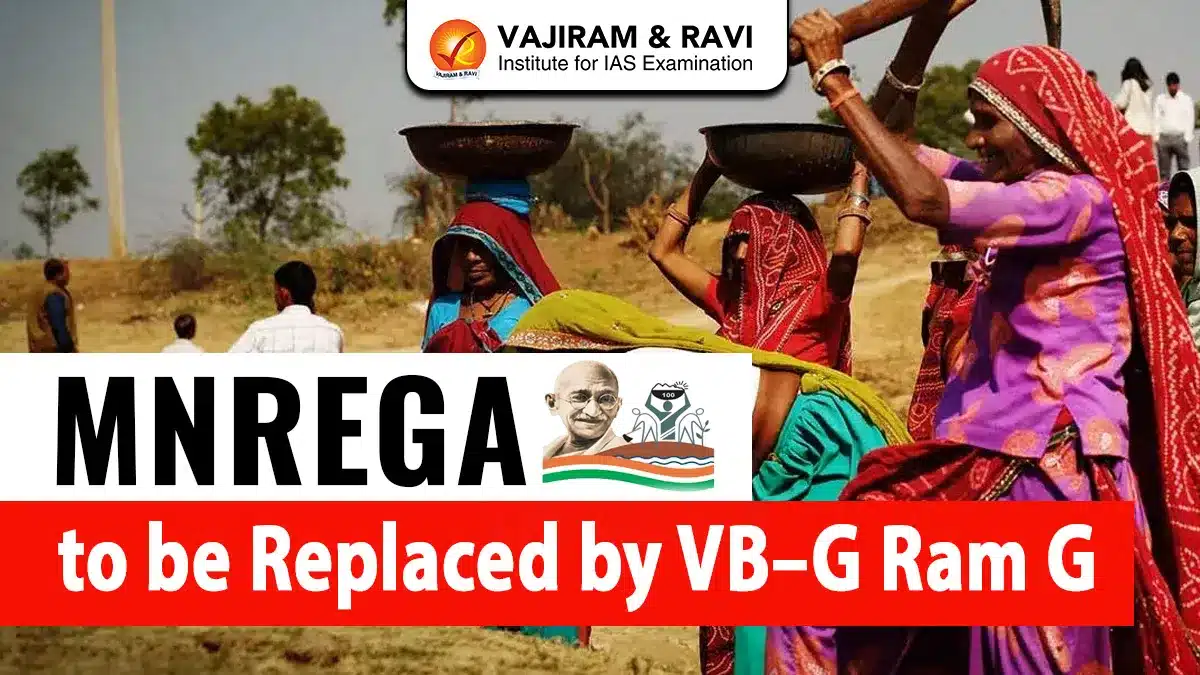Top 10 Longest Rivers in India: India, known for its rich network of rivers, depends on these waterways for both its environment and economy. Indian rivers are broadly classified into two types: Himalayan Rivers, which are fed year-round by melting glaciers, and Peninsular Rivers, which rely on seasonal rainfall. Leading them all, the Ganga stretches over 2,525 km, making it the Longest River in India. In this article, we’ll explore the Top 10 Longest Rivers in India List and their importance.
Longest Rivers in India
The Ganges River, or Ganga, stands as Longest Rivers in India, spanning roughly 2,525 kilometers from the Himalayas to the Bay of Bengal. Beyond its length, the Ganga holds deep cultural and spiritual significance, impacting the lives and beliefs of millions across the country. The Ganges River originates high in the Himalayas, beginning its journey at the Gangotri Glacier in Uttarakhand, India. The Ganges River travels through multiple states, starting from Uttarakhand and flowing through Uttar Pradesh, Bihar, Jharkhand, and West Bengal, before merging with the Bay of Bengal. A detailed map of the Ganges highlights its path and the diverse regions it nourishes along the way.
Top 10 Longest Rivers of India
Discover Top 10 Longest Rivers of India ranked by their length:
| Top 10 Longest Rivers of India | |||||
|
S.No |
River |
Length in India (km) |
Total Length (km) |
Origin |
Empties Into |
|
1 |
Ganga |
2,525 |
2,525 |
Gangotri Glacier, Uttarakhand |
Bay of Bengal |
|
2 |
Godavari |
1,464 |
1,465 |
Trimbak, Maharashtra |
Bay of Bengal |
|
3 |
Krishna |
1,400 |
1,400 |
Mahabaleshwar, Maharashtra |
Bay of Bengal |
|
4 |
Yamuna |
1,376 |
1,376 |
Yamunotri Glacier, Uttarakhand |
Confluence with Ganga |
|
5 |
Narmada |
1,312 |
1,312 |
Amarkantak Plateau, Madhya Pradesh |
Arabian Sea |
|
6 |
Indus |
1,114 |
3,180 |
Tibet (near Lake Mansarovar) |
Arabian Sea |
|
7 |
Brahmaputra |
916 |
2,900 |
Angsi Glacier, Tibet |
Bay of Bengal |
|
8 |
Mahanadi |
890 |
890 |
Sihawa Hills, Chhattisgarh |
Bay of Bengal |
|
9 |
Cauvery |
800 |
800 |
Brahmagiri Hills, Karnataka |
Bay of Bengal |
|
10 |
Tapi (Tapti) |
724 |
724 |
Satpura Range, Madhya Pradesh |
Arabian Sea |
Longest Rivers in India in Brief
Top 10 Longest Rivers of India each tell a unique story as they flow across the country, sustaining its people, culture, and rich history. From the mighty Ganga, the longest, to the more modest Tapi, these rivers shape India’s landscapes and heritage. Here’s a closer look at the Top 10 Longest Rivers of India:
Ganga River
The Ganga River, with a total length of 2,525 kilometers, holds the title of the Longest River in India, flowing entirely through the mainland. It originates from the Gangotri Glacier in Uttarakhand and travels across multiple states, including Uttar Pradesh, Bihar, and West Bengal, before merging with the Bay of Bengal. Along its journey, the Ganga is fed by numerous tributaries. On the left bank, it receives waters from the Ramganga, Garra, Gomti, Ghaghara, Gandak, Burhi Gandak, Koshi, and Mahananda rivers. Its right bank tributaries include the Yamuna, Tamsa, Son, Punpun, Kiul, Karmanasa, and Chandan rivers.
Godavari River
The Godavari River, spanning a length of 1,464 kilometers, holds the title of the Longest Rivers in India in peninsular region. It originates from the Triambakeshwar region near Nashik in Maharashtra. The river flows through the states of Chhattisgarh, Telangana, and Andhra Pradesh before emptying into the Bay of Bengal. Along its journey, the Godavari is joined by several tributaries: the left bank tributaries include the Banganga, Kadva, Shivana, and Purna rivers, while the right bank tributaries are Nasardi, Darna, and Pravara.
Krishna River
The Krishna River spans 1,400 kilometers, originating from the Western Ghats at an elevation of approximately 1,337 meters, just north of Mahabaleshwar, about 64 kilometers from the Arabian Sea. Its left bank tributaries include the Bhima, Dindi Musi, Paleru, and Munneru rivers, while the right bank is fed by the Vienna, Koyna, and Panchganga rivers. The Krishna River ultimately flows into the Bay of Bengal. Known for its vital role in irrigation, it is a major water source for the states of Maharashtra, Karnataka, Telangana, and Andhra Pradesh.
Yamuna River
The Yamuna River, spanning a length of 1,376 kilometers, originates from the Yamunotri Glacier, located at the Banderpoonch Peak in Uttarkashi district, Uttarakhand. As one of the primary tributaries of the Ganges, the Yamuna’s tributaries include Hindon, Sharda on the left bank, and Chambal, Betwa, and Ken on the right. The river flows through several key states, including Uttarakhand, Himachal Pradesh, Delhi, Haryana, and Uttar Pradesh.
Narmada River
The Narmada River, stretching over 1,312 kilometers, originates from the Amarkantak Peak in Madhya Pradesh. Its left-bank tributaries include Burhner, Banjar, Sher, and Karjan, while the right bank tributaries consist of Hiran, Tendoni, and Choral. The river flows westward, ultimately emptying into the Arabian Sea. Often referred to as the “Lifeline of Madhya Pradesh and Gujarat,” the Narmada plays a crucial role in the agricultural and economic development of both states.
Indus River
The Indus River holds the distinction of being the longest river in terms of the total distance it covers, stretching over 3,180 kilometers. However, within India, it flows for approximately 1,114 kilometers, with the majority of the river’s course running through present-day Pakistan. Originating from the northern slopes of the Kailash Range in Tibet, near Lake Manasarovar, the river traverses vast regions. Prominent cities situated along its banks include Leh and Skardu. The river is fed by several tributaries, with the left bank contributing Zanskar, Suru, Soan, Jhelum, Chenab, and Luni, while the right bank is nourished by Shyok, Hunza, Gilgit, Gomal, and Zhob. Ultimately, the Indus River empties into the Arabian Sea.
Brahmaputra River
The Brahmaputra River, stretching 2,900 kilometers from Tibet’s Kailash Ranges, flows 916 kilometers through India, entering via Arunachal Pradesh. Its left bank tributaries include Dibang, Lohit, and Dhansiri, while the right bank is fed by Kameng, Manas, Jaldhaka, Teesta, and Subansiri. In Bangladesh, it becomes the Jamuna River, merging with the Padma (Ganges) before emptying into the Bay of Bengal. Majuli, an island in Assam’s Brahmaputra, became India’s first river island district in 2016, once covering 880 square kilometers at the turn of the 20th century.
Mahanadi River
The Mahanadi River, stretching 890 km, begins its journey in the Raipur district of Chhattisgarh. Its left bank tributaries include the Mand, Ib, and Hasdeo rivers, while its right bank tributaries are the Ong and Parry. The river ultimately empties into the Bay of Bengal. Due to its impact on Odisha, it has historically been referred to as “the distress of Odisha.” However, the construction of the Hirakud Dam has significantly changed the situation, providing much-needed regulation and flood control.
Cauvery River
The Cauvery River, spanning 800 km, originates from the Brahmagiri Range in the Western Ghats, located in the Coorg District of Karnataka. On its left bank lies the Harangi Reservoir, while its primary right bank tributary is the Lakshmana Tirtha. The river ultimately flows toward the Grand Anicut in the south, before branching into numerous distributaries. These tributaries form a vast delta, often referred to as the “Garden of Southern India,” before the Cauvery empties into the Bay of Bengal, in Tamil Nadu.
Tapi River
The Tapi River, stretching over 724 kilometers, begins its journey from the Satpura Range. It flows through the states of Madhya Pradesh, Maharashtra, and Gujarat before emptying into the Gulf of Khambhat, part of the Arabian Sea. The river is fed by six tributaries, including Purna and Girna.
Largest River in India
Last updated on December, 2025
→ Check out the latest UPSC Syllabus 2026 here.
→ Join Vajiram & Ravi’s Interview Guidance Programme for expert help to crack your final UPSC stage.
→ UPSC Mains Result 2025 is now out.
→ UPSC Notification 2026 is scheduled to be released on January 14, 2026.
→ UPSC Calendar 2026 is released on 15th May, 2025.
→ The UPSC Vacancy 2025 were released 1129, out of which 979 were for UPSC CSE and remaining 150 are for UPSC IFoS.
→ UPSC Prelims 2026 will be conducted on 24th May, 2026 & UPSC Mains 2026 will be conducted on 21st August 2026.
→ The UPSC Selection Process is of 3 stages-Prelims, Mains and Interview.
→ UPSC Result 2024 is released with latest UPSC Marksheet 2024. Check Now!
→ UPSC Prelims Result 2025 is out now for the CSE held on 25 May 2025.
→ UPSC Toppers List 2024 is released now. Shakti Dubey is UPSC AIR 1 2024 Topper.
→ UPSC Prelims Question Paper 2025 and Unofficial Prelims Answer Key 2025 are available now.
→ UPSC Mains Question Paper 2025 is out for Essay, GS 1, 2, 3 & GS 4.
→ UPSC Mains Indian Language Question Paper 2025 is now out.
→ UPSC Mains Optional Question Paper 2025 is now out.
→ Also check Best IAS Coaching in Delhi
Top 10 Longest Rivers in India FAQs
Q1. Which is the longest river in India?+
Q2. Which is the inland longest river of India?+
Q3. Which is the longest tributary river of India?+
Q4. Which is the longest river of South India?+
Q5. Which is the largest river island of India?+
Tags: longest rivers in india

















